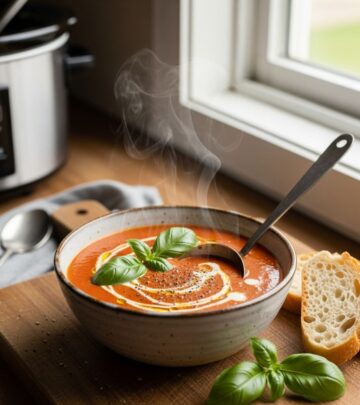A Guide to the Essential Dishes of Laos
Explore the unique flavors and cultural stories behind Laos’ most iconic dishes—from zesty salads to aromatic noodle soups and fragrant grilled delicacies.

Lao cuisine reveals a lush tapestry of flavors, techniques, and stories from a nation bordered by culinary giants. Here, sticky rice is more than a staple—it is tradition. Herbs and fermented fish sauces spark freshness and complexity, while every dish is a celebration meant to be shared. Whether you crave aromatic grilled meats, craveworthy noodle soups, or piquant salads, understanding the essential dishes of Laos opens a window to the nation’s soul. This guide explores the foundational recipes, regional nuances, and cultural significance behind Laos’ most iconic foods.
Introduction: The Flavors of Lao Cuisine
Lao cooking is marked by the ubiquity of sticky rice (khao niao), an abundance of fresh herbs, wild greens, and the unifying flavors of padaek—a potent, thick fermented fish sauce. Meals are communal and eaten family style: diners gather around a table of small, vibrant dishes, pinching sticky rice and using hands as utensils. Brothy noodles, grilled meats, fiery dips, and herb-laced salads are common, and the cuisine remains deeply regional, shaped by centuries of trade and tradition.
The Foundation: Khao Niao (Sticky Rice)
Sticky rice is the indispensable heart of Lao cuisine. This glutinous grain is soaked overnight and steamed in a bamboo basket, resulting in firm but pliable clumps perfect for rolling and dipping. In Laos, sticky rice is eaten by hand with nearly every dish, from spicy soups to rich dips and salads.
- Served in small bamboo baskets called thip khao
- Used to scoop meat, vegetables, and sauces
- Found in all regions as both staple and snack
The National Dish: Larb (Laap, Laab)
Larb, often referred to as Laos’ national dish, expresses the Lao philosophy of balance and freshness. It’s a salad of minced meat—commonly chicken, pork, fish, beef, or even mushrooms—rapidly cooked with lime juice, fish sauce, ground toasted rice, and a generous amount of fresh herbs.
- Features a punchy interplay of zesty, savory, herbaceous flavors
- Often served spicy and with optional raw meat or offal in some regions
- Accompanied by slices of cucumber, lettuce, and lots of sticky rice
Regional riffs use local protein sources and unique herbs, lending every region its own version. Larb is both festive and everyday fare, symbolizing good luck at celebrations or gatherings.
More Salads: Tam Mak Hoong and Friends
Lao salads are defined by bold flavors, raw vegetables, and fresh herbs. The most renowned is tam mak hoong (Lao-style green papaya salad).
- Tam Mak Hoong: Combines shredded green papaya, tomatoes, garlic, chilies, fish sauce, lime, and often padaek, pounded together in a mortar and pestle for a spicy, sour, and pungent profile. Local additions like yardlong beans, peanuts, or pickled crab vary by region.
- Other favorites include:
- Tam Som: Generic term for pounded sour salads made from unripe mango, cucumber, or other fruits.
- Tam Mak Tang: Cucumber salad with a similar spicy-tangy dressing.
- Yum: A category for mixed salads, often with noodles or meat, dressed in a tart, chili-laden sauce.
Classic Noodle Dishes of Laos
Lao noodle dishes span soups, stir-fries, and more, marked by herbal freshness and a medley of condiments. Below are the essential noodle classics:
| Dish | Main Ingredients | Key Features | Common Condiments |
|---|---|---|---|
| Foe (Lao Pho) | Rice noodles, pork or buffalo broth, meatballs, sliced meat | Lao version of pho, less beefy, lighter but full-bodied broths | Fresh herbs, lettuce, lime, chiles, fried rice cakes |
| Khao Pun | Fermented rice noodles, peppery pork broth | Served in soup or as noodle rolls with herbs and vegetables | Banana blossom, bamboo, papaya, spicy sauces |
| Khao Piak Sen | Thick rice & tapioca noodles, pork/chicken broth | Noodles boiled in broth for starchy, viscous texture | Fried shallots, cilantro, crackly pork, chile oil |
| Khao Soi (Lao style) | Rice noodles, minced pork, tomato-soybean paste | Not curry-based; tart, umami “Lao bolognese” topping | Herbs, bean sprouts, chili paste, lime |
| Khao Laeng Fuen | Gelatinous rice noodle cubes, tart broth | Unique texture, seasoned with acacia leaves | Spicy fermented soybean dipping sauce |
| Khua Mee | Fried rice noodles, sweet soy, herbs | Simple, often market or ceremonial food | Chili powder, fish sauce |
Noodle dishes are always served with a miniature larder of herbs, sprouts, limes, chili powders, and sometimes crunchy rice cakes to stir in at the table. Each bowl is customized to taste, reflecting the communal ethos of Lao eating.
Grilled Meats, Skewers, and Lao Barbecue
Laotian street corners and homes often fill with the fragrant smoke of ping—grilled dishes of marinated meats, poultry, and fish. Popular options include:
- Ping Gai: Marinated, flattened chicken grilled until golden, served with jeow (dipping sauce).
- Ping Sin: Grilled beef or pork slices, simply salted and charred.
- Mok Pa: Fish wrapped in banana leaves with herbs and steamed or grilled for a subtle herbal aroma.
Lao barbecue is always paired with dipping sauces, most notably jeow varieties made from ingredients like roasted tomatoes, chilies, or eggplant, pounded into piquant perfection in a mortar and pestle.
Dips and Sides: The Culture of Jeow
Jeow describes a range of Lao dipping sauces, essential at every meal. These condiments turn simple sticky rice or grilled meats into crave-worthy bites. Popular varieties include:
- Jeow Bong: A smoky, sweet chili paste from Luang Prabang made with galangal and buffalo skin.
- Jeow Mak Len: Roasted tomato dip with garlic and chilies—fiery and tangy.
- Jeow Mak Keua: Roasted eggplant, pounded with garlic and herbs.
- Jeow Het: Mushroom-based dip common in the rainy season.
Served alongside vegetables, grilled fish, or meats, jeow are as important as the main dishes themselves, evolving endlessly with the season and region.
Soups and Hearty Stews
Laotian meals are punctuated by sour, spicy soups and robust stews. These range from light, herb-infused broths to slow-cooked, fatty stews flavored with local greens and roots.
- Or Lam: A specialty of Luang Prabang with chunks of eggplant, mushrooms, wild greens, chili wood, and buffalo or chicken. The stew is thickened with sticky rice flour and heavily perfumed with lemongrass and kaffir lime leaves.
- Kaeng Nor Mai: A sour bamboo shoot soup combining bamboo, mushrooms, green herbs, squash, and padaek for umami depth.
- Kaeng Som: A tart, brothy soup combining fish and an array of vegetables with tamarind for acidity.
Each family or region brings its own approach, resulting in an ever-shifting landscape of flavors and textures.
Unique Specialties and Snacks
Lao markets and homes are filled with savory snacks and unique specialties. Some of the most beloved include:
- Sai Oua: Herb-filled pork sausage, grilled and served in slices
- Khao Jee: Toasted sticky rice cakes, often brushed with egg and cooked over coals
- Nem Khao: Crispy rice salad mixed with herbs, peanuts, and fermented pork
- Ping Kai: Marinated chicken skewers (distinct from the whole Ping Gai), popular as street food
Breakfast in Laos is just as exciting, featuring items like khao piak sen as a morning soup, khao jee sandwiches (Lao banh mi), or fried bananas from street vendors.
Vegetarian and Vegan Lao Dishes
Lao food is often centered around proteins and fish sauces, but plenty of dishes offer vegetarian and vegan options, especially in Buddhist communities and during certain festivals.
- Larb Het: A mushroom larb prepared with the same vibrant herb mix and toasted rice.
- Or Lam Het: Mushroom and vegetable stew with wild greens.
- Tam Mak Hoong (without fish sauce/padaek): Easily made vegan by substituting with soy sauce or omitting fermented ingredients.
- Grilled eggplant or mushroom jeow: Served as hearty dips for sticky rice.
Seasonal wild greens and freshwater vegetables augment the Lao table, providing a bounty of plant-based flavors throughout the year.
Dining Culture and Traditions
Meals in Laos are communal, often eaten family-style, sitting on low tables or mats. Key Laotian eating customs include:
- Khao niao (sticky rice) eaten with the right hand, using fingers to press and scoop
- Dishes are served all at once for sharing
- Accompaniments of fresh vegetables, herbs, and jeow sauces on every table
Food is central to celebrations, religious ceremonies, and daily life, reflecting the profound hospitality of the Lao people.
Frequently Asked Questions (FAQs) About Lao Cuisine
Q: What makes Lao food different from Thai or Vietnamese cuisine?
A: Lao cuisine is centered on sticky rice, abundant raw herbs, and padaek, giving dishes a unique umami pungency and drier, more textured salads compared to wetter Thai and Vietnamese foods. Lao meals also emphasize dipping sauces and hand-to-mouth eating.
Q: Is Lao food usually spicy?
A: Many Lao dishes, especially salads and soups, contain significant chili heat, but diners often adjust spice levels at the table using condiments and fresh chilies.
Q: Can vegetarians enjoy Lao cuisine?
A: Although protein and fish sauce are common, vegetarian and vegan options abound, using mushrooms, tofu, or special plant-based jeow dips and salads.
Q: What is padaek and why is it important?
A: Padaek is a thick, fermented fish paste or sauce unique to Lao cuisine, lending a deep savory, salty backbone to many signature dishes, much like anchovy or shrimp paste elsewhere in Southeast Asia.
Q: Are Lao meals always eaten by hand?
A: Many dishes, especially those served with sticky rice, are eaten using fingers (right hand only), though soups and noodle dishes are eaten with spoons and chopsticks.
Conclusion: The Heart of Laos on the Plate
From the bustling markets of Vientiane to rural riverside homes, the essential dishes of Laos tell stories of landscape, migration, and ingenuity. Whether a simple bowl of khao piak sen or an elaborate spread of larb, jeow, sticky rice, and grilled meats, Lao food invites sharing, celebration, and the slow savoring of uniquely Southeast Asian flavors. Discover these classics, and experience the vibrant spirit of Laos with every bite.
Read full bio of Sneha Tete












